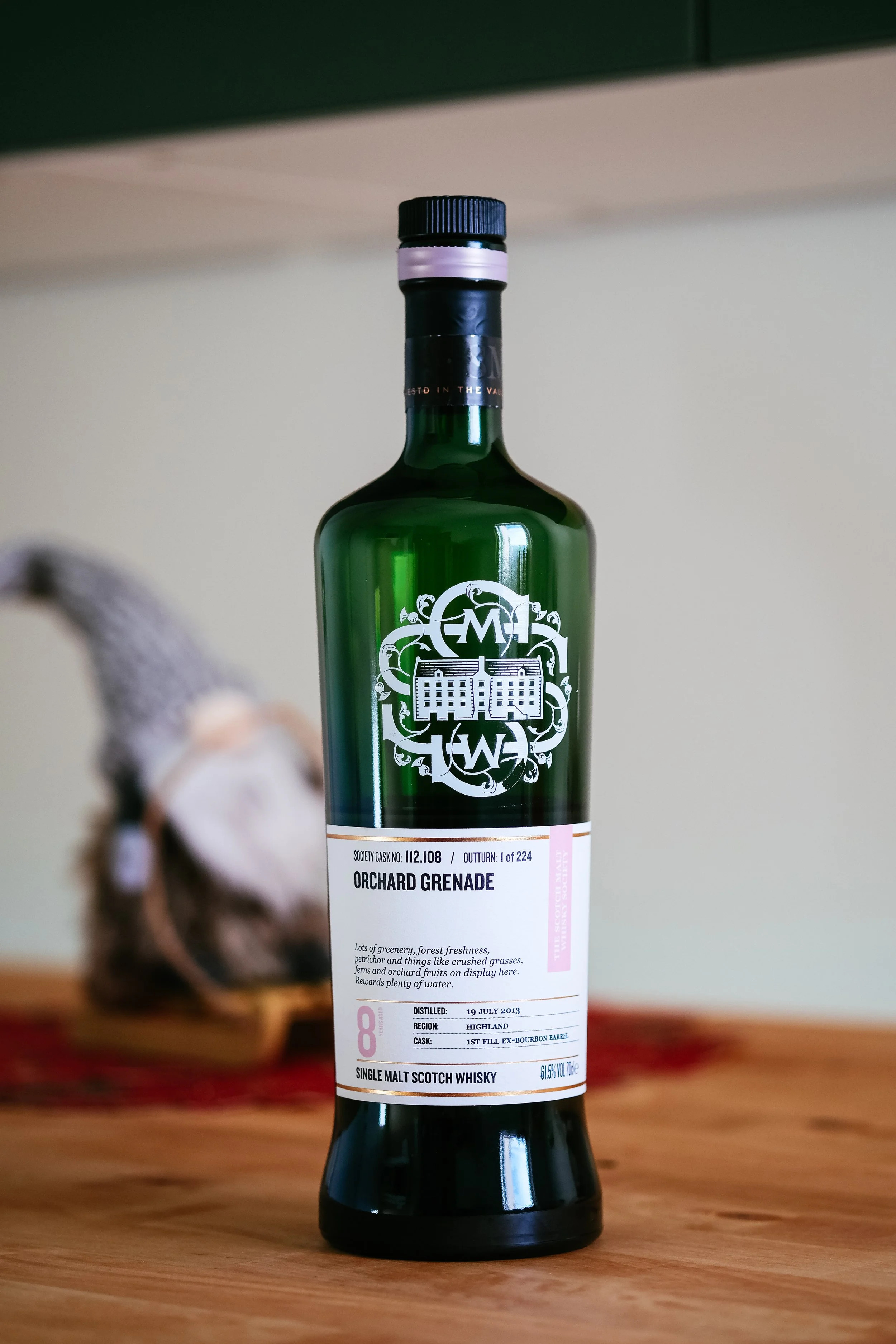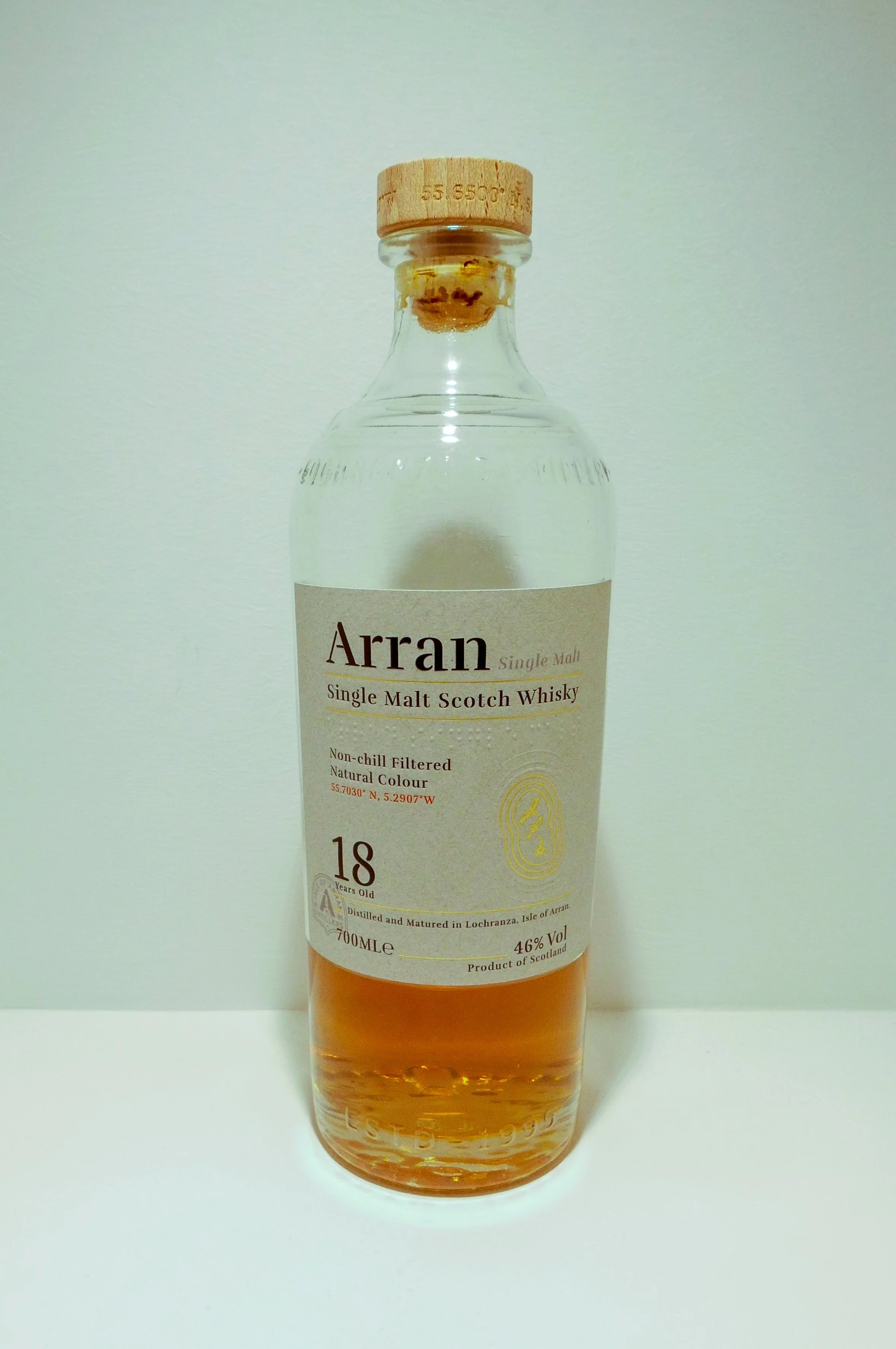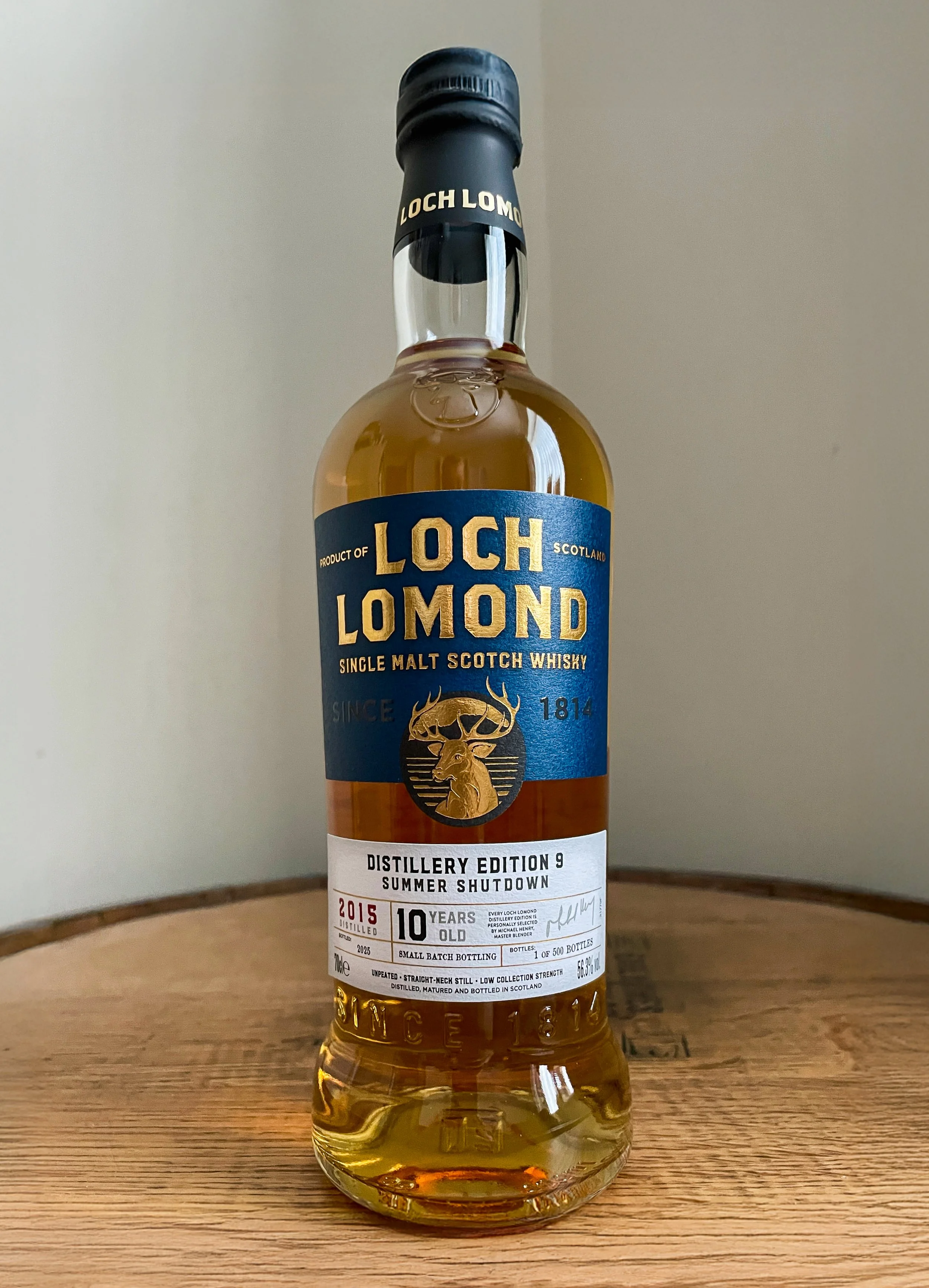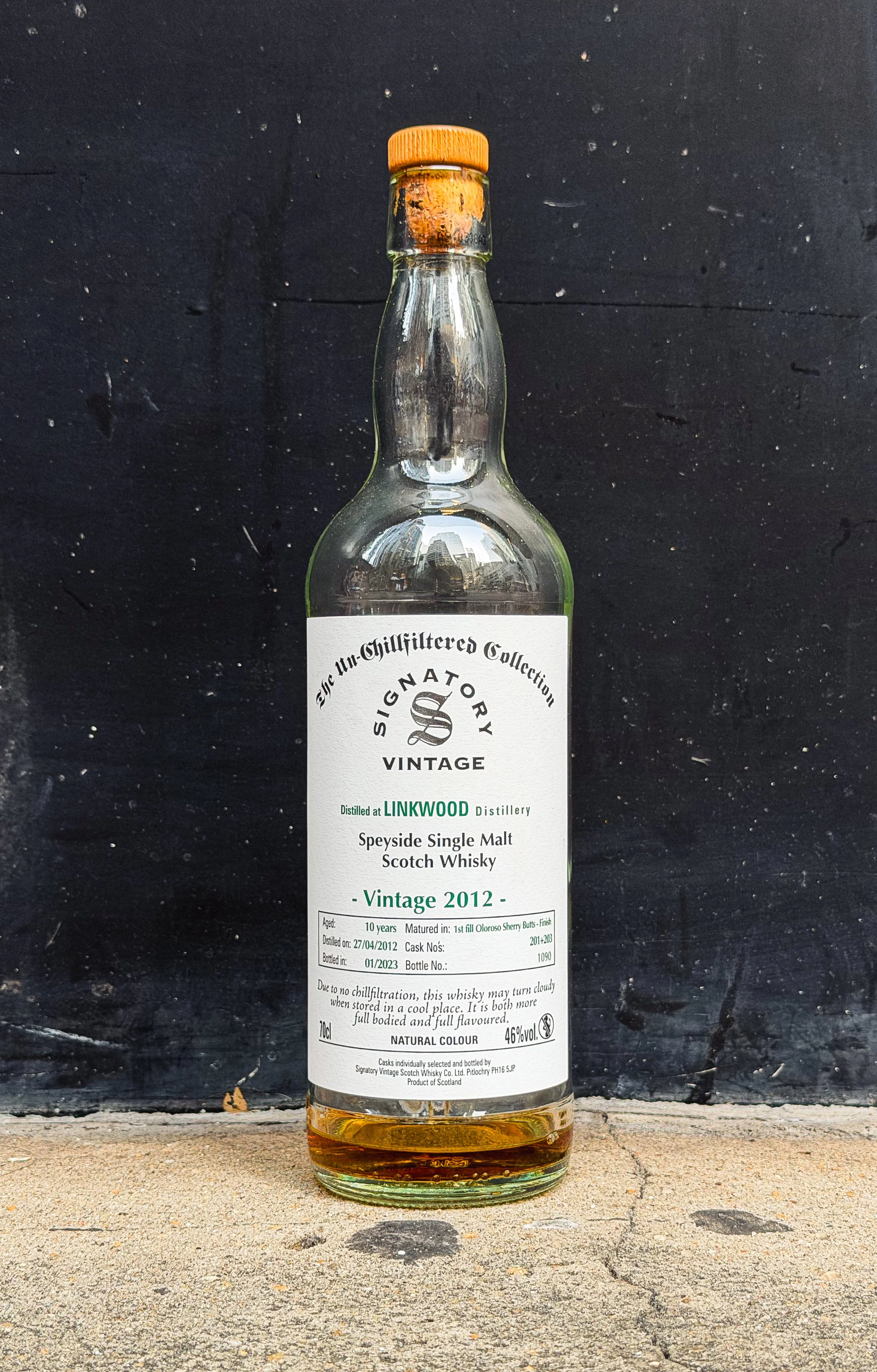Lochlea Dark Briar vs Fallow
New Core Release vs Third Edition Seasonal | 46% ABV
What does ‘Core Range’ even mean?
It can be a difficult start for any new distillery to find the balance between cash influx and allowing your product the time to mature and rest until it's ready.
Finding your feet and establishing a brand is a challenge, especially while your team tinkers away at developing a distinct character; a flavour profile to stand out among todays whisky masses.
Lochlea are but one example of a new player attempting this in Scotch and this newly announced ‘core range’ from them had me thinking of their releases to date, how they’ve arrived here and what lies ahead.
Starting out with an inaugural 'first release' seems easy - enthusiasts and whisky drinkers are excited to see what's in store. It may help that there’s a peculiar interest in this case - a new Lowland distillery with its own barley grown on Lochlea farm. This piques interest and, in my view, they’ve done well to maintain momentum ever since.
Over the years since their first whisky, Lochlea have treated us to annual seasonal releases before today landing at their first ever permanent ‘core range’ of single malt whisky. Which got me thinking. The concept of a core range is something that's utilised and adopted by the majority of whisky makers, but when did this concept first come into play?
A ‘core range’, as we know it, makes up the branded backbone of a distillery’s standard lineup; a showcase to what they can create. These are the whiskies you are meant to find, somewhat reliably, year after year as opposed to their limited editions, single casks, or occasional special releases we might only see from time-to-time, usually for a much higher price.
Consistency becomes the main focus when it comes to a core range offering. We do, of course, on occasion see batch variance, but this is usually accepted and celebrated today as we know that it’s rare to see malt whiskies created the exact same way each and every time. However, that’s the goal of a ‘core range’ and the challenge of crafting a consistent lineup is in the hands of the blender.
During the seasonal releases from Lochlea, everyone expected there to be changes from year to year. It was almost the point of them; their work-in-progress, if you like. Now, with this new line-up of ‘core releases’, we may be forgiven for interpreting this as a declaration; they’re at a point in their evolution where they can maintain consistent anchor points for us to reliably connect with their output.
It’s hard to pinpoint where in history this term we know today as a ‘core range’ actually derived from. Or who was the first distillery to release a range of core offerings. Whiskies were indeed described as ‘regular’ or ‘standard’ distillery bottles, compared to a special release or limited-edition bottles such as single casks and small batches - which were essentially more often than not ‘one-offs’.
The term ‘core range’ seems to be a more modern term used to promote a distillery's own single malt. Of course, when it comes to malt, Glenfiddich is widely credited with the move to be the first to bottle and release a single malt. Back in 1963 they began promoting their single malt to a wider audience, especially with the purpose of export, and their ‘Pure Malt’ was the first to showcase a specific distillery ‘brand’ rather than a blend of malts, or malt and grain. Certainly, it was the first at any real, permanent scale.
While the concept of a core or standard range is today synonymous with single malts, both with an age statement and without, we see glimpses of this strategy historically occuring within blends too. We only need to look at Johnnie Walker. Their approach as far back as 1906, when they supplied whisky in bulk, was to adopt short hand names to distinguish the difference between the age bands of their available blends.
Distinctive colours of white, red or black were released in April 1906 alongside age statements for each. Declared ages started with over 5 years old, over 9 and even over 12 years old for each respectively. At that time, this showcased - and almost boasted about - the plentiful stocks available to John Walker & Sons, and the practice caught the imagination of drinkers as well as the eye of other blending houses such as Buchanan’s. The association between age and quality was a thing back then, and holds true today.
Other examples of this include Mitchell and Sons Wine Merchants in Dublin. Their famous adoption of colour gives us the Pot Still Irish ‘Spot’ range that we know today. They had traditionally marked their whiskeys with a spot of paint to identify how long the barrels would be matured for - similar to how it was presented by Johnnie Walker. Blue for 7 years, Green for 10 years, Yellow for 12 years and Red for 15 years. It was these painted ‘spots’ on the barrel heads that lead to the ‘Spot’ whiskey core-range we see today.
There are, of course, many others to have released branded distillery-release bottles over the years, often far before the Glenfiddichs of the 1960s. Distilleries such as Glenlivet, Laphroaig and Macallan have very long histories of age-statement bottlings, but these tended to be for very specific markets - usually domestic. The idea of packaging and marketing a ‘core-range’ standard or several regularly available single-malt expressions didn’t come until much later.
So it seems that the term ‘core range’, or the idea of this used in the context of scotch whisky, is a relatively new concept taking hold in the last 20 - 25 years - more or less. There’s nothing to even suggest it as an official whisky term, rather just familiar language coined and used by those that seem to offer a consistent offering of a distillery-branded bottling range.
Review 1/2
Lochlea Fallow, Seasonal Release, Third Edition, first fill Oloroso, 2024 bottling, 46% ABV
£50 paid and still available here and there
And so, in 2025, we have a brand new ‘core range’ from a relatively new distillery. These bottles replace the seasonal releases we’ve enjoyed until now. A quick Dramface search for ‘Lochlea’ will list all that we’ve reviewed until now, but for more details on this new range from the source, you can head here to our news section.
As I picked up one of the new offerings in the shape of the Dark Briar I recalled that I had purchased the latest - and last - edition of their now discontinued seasonal Fallow Edition. Since they both feature sherry cask maturation I thought doing a side by side would make for a good comparison and an interesting tasting session. Although both of these releases do have a slightly different cask makeup, the Dark Briar (to me) is the successor to what the Fallow edition was.
This Fallow Third Edition was released at the end of 2024. Matured in a range of first-fill Oloroso Sherry butts, it’s natural colour and non chilled-filtered.
Having enjoyed both previous editions it was a no brainer for me to pick up the third at £50.
Score: 5/10
Average. In a Good Way
TL;DR
I preferred the first two Fallow releases, this one seems overly sweetened
Nose
Musty initially, and a little jagged. Spice on the first nosing with wood influence that develops into cinnamon and nutmeg. Strong sherry influence, the Oloroso sherry butts are doing the heavy lifting. It’s also earthy, with hints of sulphur and just a faint notion of some motor oil in there too. Big and punchy, which can get in the way of untangling this dram a bit more. It has fruity sweetness in abundance, but not much else.
Palate
Strawberry laces. Raspberry jam and stroopwaffles. There’s that sweetness from the nose. The mouthfeel is decent, nicely coating, it holds with a nice weight which leads to a medium finish. The sweetness lingers with brown sugar and some orange zest. With a little time, aniseed and stone fruit begin to develop, but not too much. Very sweet still. Some sugar and maple syrup in the mix which, in the end, is too much for me and a little off putting.
Score: 5/10
Review 2/2
Lochlea Dark Briar, 2025 bottling, Oloroso, Pedro Ximenez and Port casks, 46% ABV
£45 paid and widely available
The Dark Briar edition was released as part of the new core range in early September this year. The liquid was matured in Oloroso, Pedro Ximenez and Port casks for an undisclosed length of time. As with the previous releases it boasts natural colour and no chill-filtration
Score: 6/10
Good stuff.
TL;DR
A step in the right direction, encouraging for the future
Nose
Very sherried, with a little nuttiness and fruitiness greeting right away. An earthy element here too, with bread and plenty of malt in the mix. Just what I’ve come to expect from a typical Lochlea. It has a nice stout-esque element with brown sugar and a little beef stock. Some red grapes, strawberry jam and toasted raisin bread, redcurrants and mushed ripe raspberries too. It rounds off with honeyed oats, Jacobs cream crackers and gooseberries.
Palate
Vegetal. Earthy, with spent malt on the initial sip. Tinned peaches. Chocolate limes and fresh coffee grounds. Orange marmalade with whole cherries. Milk-soaked jumbo oats and some chopped almonds. It’s bready and yeasty; right up my street. That strawberry confectionary element shines though, in the form of bonbons. Stewed apples with cinnamon, even hinting at rice pudding and a little vanilla custard.
Score: 6/10
The Dregs
Due to my enjoyment of the first two releases, I had higher hopes for the Fallow Third Edition if I’m honest. The nose was okay, but for me it was just too sweet on the palate. I feel the cask influence is overwhelming. It’s not allowing the spirit to dance: it should always be the main character.
The Dark Briar does this better, it’s very promising. While it’s still young it has more character, it’s better put together and the malty Lochlea flavour is all there. It’s also showing some maturity; it’s rounding out nicely.
It does give an encouraging glimpse into the future of the releases from this Lowland farm distillery, with an easy sipping, enjoyable whisky experience. I’m now invested in the other releases within this new range, and I’ll plan to make a beeline to sample them at the upcoming Glasgow Whisky Festival.
It’s a shame the Fallow was disappointing. I feel the First and Second Editions were better, both young but showing promise. I was expecting a last hurrah from the Third Edition in this seasonal range, but in the end it was a step back. It still deserves a Dramface 5 however, and I feel like - especially alongside the new Dark Briar - there’s a solid future ahead for Lochlea.
However the term came about, it’s reassuring to see a core range in place and it’s one I’ll personally be delighted to follow as it matures over the years.
Tried this? Share your thoughts in the comments below. HF
-
Dramface is free.
Its fierce independence and community-focused content is funded by that same community. We don’t do ads, sponsorships or paid-for content. If you like what we do you can support us by becoming a Dramface member for the price of a magazine.
However, if you’ve found a particular article valuable, you also have the option to make a direct donation to the writer, here: buy me a dram - you’d make their day. Thank you.
For more on Dramface and our funding read our about page here.
Other opinions on this:
Fallow Third Edition:
Whiskybase
Dark Briar:
Whiskybase
Got a link to a reliable review? Tell us.









































